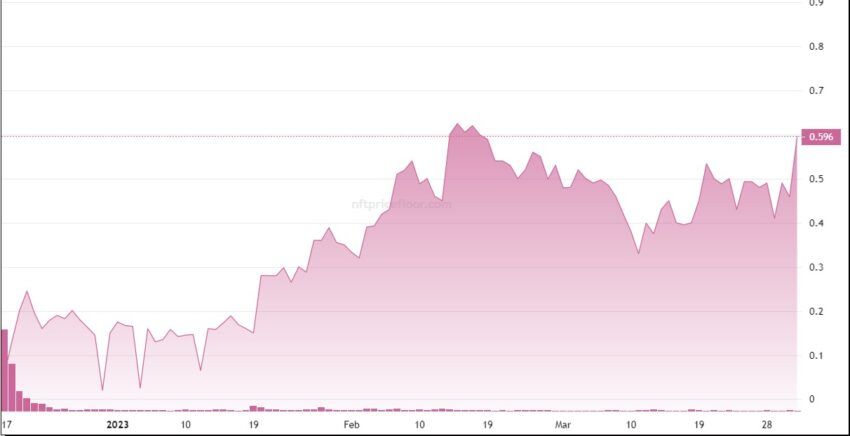Study Shows FOMO Drives Cryptokrill to Bitcoin Whales with Up to 81% Losses

Editor’s Note: With so much market volatility, stay tuned for daily news! Get caught up in minutes with our quick summary of today’s must-read news and expert opinions. Sign up here!
 (Kitco News) – The crypto community is overrun by experts and ideologues who promise cryptocurrency as a smart way to hedge against inflation, or a principled way to opt out of corrupt financial systems, or a sound way to protect against global crises.
(Kitco News) – The crypto community is overrun by experts and ideologues who promise cryptocurrency as a smart way to hedge against inflation, or a principled way to opt out of corrupt financial systems, or a sound way to protect against global crises.
A recent study by the Bank of International Settlements (BIS) shows that these arguments are like the buffet at a casino: a nice bonus if it’s there, and a convenient way to justify the whole exercise, but not what brings people through the door.
In a working paper titled ‘Crypto trading and Bitcoin prices: evidence from a new database of retail adoption’, authors Sebastian Doerr, Jon Frost, Raphael Auer, Giulio Cornelli and Leonardo Gambacorta built a large dataset of retail investors’ daily use of crypto exchange apps in 95 countries from 2015 to 2022.
The authors show that there is one overwhelming factor driving people to download crypto apps and buy Bitcoin: price increases.
“First, we show that an increase in the price of Bitcoin is associated with a significant increase in new users, i.e. the entry of new investors,” they write, adding that the positive correlation between newsworthy price increases is strong even when they controlled for other factors such as “general financial market conditions, uncertainty or country characteristics”.

Perhaps most tellingly, they write that “the price of Bitcoin remains the most important factor when we control for global uncertainty or volatility, contradicting explanations based on Bitcoin as a safe haven.” Even when differences in quality and trust in institutions or levels of economic development are taken into account, a simple price increase “still has an economically and statistically significant effect on the number of new users and explains the lion’s share of the variation in the entry of new users. users.”
The study also makes it very clear that the “crypto bridge” stereotype is well deserved. “By far the largest group of users – almost 40% – were men under the age of 35,” they write. “Men between 35 and 54 accounted for another 25% on average.” This means that over 65% of the people on platforms like Binance, Coinbase and (shudder) FTX are men, and they are young.
.png)
What makes this demographic special in the world of finance? Are they making sound spending decisions? Their passion for careful planning? Perhaps it is their deep understanding of macroeconomic and historical factors that affect the financial markets? A penchant for due diligence, perhaps?
If you said risk appetite, you are correct. Men under 35 are “the most ‘risk-seeking’ segment of the population” and are “more sensitive to changes in the price of Bitcoin than female users and older men.”
.png)
Crypto platform adoption and Bitcoin investment is a young man’s game. “Less than 35% of all users globally are women, and the majority of female users of crypto apps are under 35,” they write.
When the authors correlated the timing of downloads and purchases with the demographics that downloaded and purchased, the conclusion was clear: “Taken together, these patterns are consistent with the speculative motive induced by feedback trading considerations, i.e., that users are drawn to Bitcoin by rising prices – rather than an aversion to traditional banks, the pursuit of a store of value or mistrust of public institutions.”
But hey, this demo can answer, so what? So us young men go into crypto when crypto is doing well… why does it matter? Well, as most older men (and almost all women) will be happy to tell them, jumping on the bandwagon and buying high is a lousy investment. The young goats are taken like lambs to slaughter. Or as krill for the whales.
.png)
The authors write that their findings “support the notion that investors, by and large, view cryptocurrencies as a speculative investment (a ‘gambling’) rather than a means of payment for real financial transactions.” They also ask a question that, in a post-Luna, post-Venture, post-FTX world, has answered itself: “If users are primarily driven by backward-looking price movements, are they fully prepared for the potential consequences of a price correction?”
“Our estimates that 73-81% of global investors are likely to have lost money on their crypto investments, and that larger investors (“humpbacks”) have tended to sell when smaller investors are buying, may warrant deeper investigation into claims of that crypto will “democratize” the financial system”, they conclude.
Well, if almost everyone who voted with their wallets shares in huge losses on the crypto ‘investments’, it’s a kind of democracy, isn’t it?
Disclaimer: The views expressed in this article are those of the author and may not reflect the views of Kitco Metals Inc. The author has made every effort to ensure the accuracy of the information provided; however, neither Kitco Metals Inc. nor the author can guarantee such accuracy. This article is for informational purposes only. It is not an invitation to exchange goods, securities or other financial instruments. Kitco Metals Inc. and the author of this article do not accept responsibility for any loss and/or damage arising from the use of this publication.

























